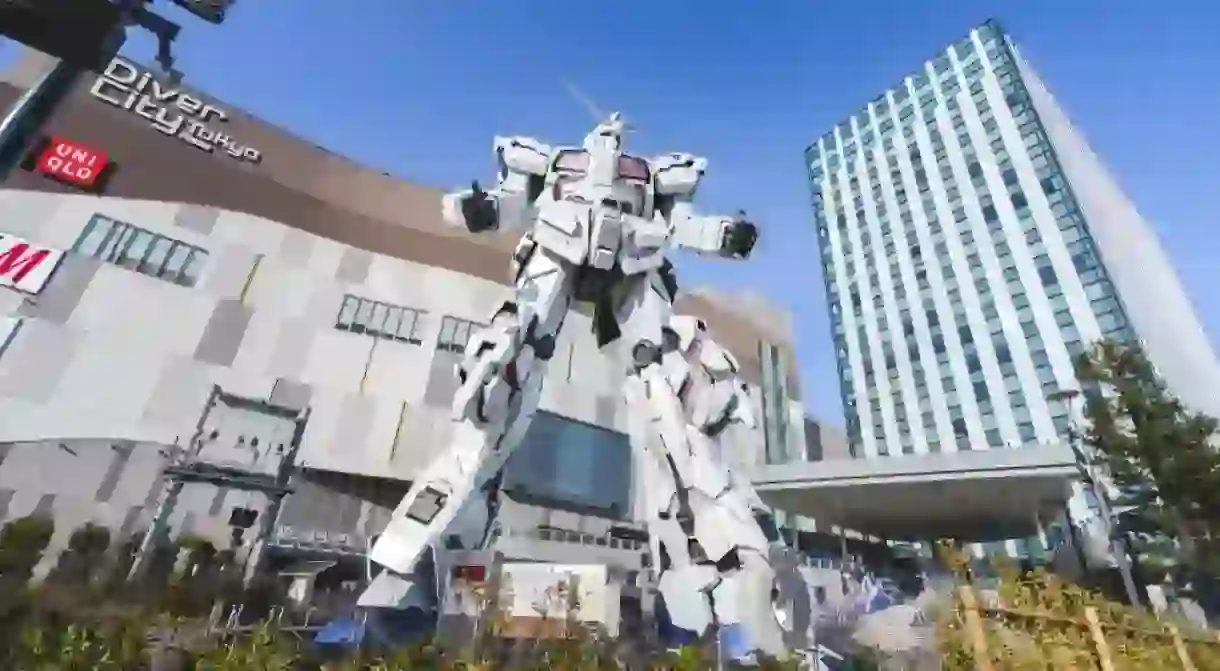The Origins of Japan's Obsession with Giant Robots

They dominate Japanese entertainment so much that they have become synonymous with the country. But why does Japan love giant robots so much?
The first time you lay eyes on it, you won’t quite believe what you’re seeing. It’s almost too big to be real.
At Tokyo’s Diver City Mall stands one of the most spectacular attractions in the developed world: a 20-metre-high, life-size Gundam. In Japan, the robot is an iconic emblem of a franchise that is a household name. Since their introduction in 1980, more than 450 million Gundam model kits have been sold. Around the world, it is an otaku totem so beloved that it made a rapturously received appearance in the movie adaptation of nerd love letter Ready Player One). The Unicorn Gundam in Diver City, complete with transforming body parts and twice-a-day light show, sums up Japan’s love affair with giant robots, also known as mecha.
https://www.youtube.com/watch?v=mXd1zN2H7U0
Mecha have been a staple of popular Japanese entertainment for decades, but their history can be traced back through the centuries. Japan’s love affair with robots of a much smaller variety began in the 1600s with karakuri – small, mechanised puppets used for entertainment. Technology was crucial to both their appeal and their appearance, a fact that has dominated Japanese robots ever since. The first example of a robot in popular Japanese fiction appeared in the 1930s but the concept solidified in the 1950s with two creations – Mighty Atom (better known to Westerners as Astro Boy) and Tetsujin-28-Go. The former was a spin on the Pinocchio fable, but the latter was instrumental in establishing a grand mecha tradition – a giant robot of fearsome capability, controlled by a human. The manga debuted in 1956 but in 1963, it got a TV adaptation which was one of the very first giant robot anime in Japan.
https://www.youtube.com/watch?v=c2zYuQqzEJQ
The concept of a human-controlled mecha was further solidified in the 1970s with the arrival of Mazinger-Z, the brainchild of legendary mangaka Go Nagai. The titular robot was far bigger than any of its predecessors and, crucially, was controlled by a human pilot seated within its interior. The robot-as-glorified-armour concept harks back to aspects of Japan’s bushido philosophy, and Mazinger-Z itself is a uniquely Japanese creation, as it is made from a fictional super-metal that can only be sourced from Mt. Fuji. Japan’s cultural identity was thus incorporated into the robot, which in turn is used to fight evil and injustice. Also, it had the ability to detach or transform parts of itself, something which made for healthy toy sales but would add another element to mecha lore, and the concept of a transforming robot would be taken to even greater heights across a number of seminal works from the ’70s onwards.
In the late 1970s, a franchise arrived that would have as seismic an impact on Japanese pop culture as Godzilla: Mobile Suit Gundam. The epic space opera took place in a future world where an Earth-based federation is at war with a separatist faction. The federation’s principle weapon is the Rx-78 Gundam (the exact same model that would later appear in Ready Player One), which at the start of the saga is piloted by a teenage boy. One of the most influential titles in anime and manga history, the Gundam universe showed that it was possible to incorporate mecha into a world every bit as expansive, gargantuan and reflective as Star Wars and Star Trek. The franchise would expand into multiple iterations and timelines, all supported by a swathe of merchandise. Gundam model kits are so popular that they now have a subculture of their very own.
https://www.youtube.com/watch?v=rdZxHfUNmvY
A few titles have followed in Gundam’s wake that would make big dents in their own right; in the 1980s we got Super Dimensional Fortress Macross (later adapted to become Robotech in the West) and the crime procedural Patlabor. In the late 1990s, the anime landscape was altered forever by Neon Genesis Evangelion, a title that subverted and deconstructed the mecha ethos into something darker and more Freudian. It’s been a while since Japanese creators have produced anything as original or dynamic as Gundam or Mazinger-Z, relying instead on sequels or new variants on existing sagas, but Japan’s love for giant robots remains firmly intact. In the present day, there is a company in Japan that actually builds its very own mechs.
Whereas Godzilla, with its analogous representation of nuclear cataclysm, represents the darker recesses of the Japanese id, mechas stand for all that is great about Japanese technological ambition. These are spectacular machines that are used, in the main, as a tool to help humanity. They represent Japan’s greatest strengths as a nation: teamwork, the ability to blend progressive technology with traditional values, forward-thinking, fortitude and using science as a means to increase the sum of happiness. Western creators have tipped their hat to mecha in recent years, most notably with the Pacific Rim franchise, and American studios are actively involved in live-action adaptations of Robotech and Gundam for release in the near-future.













